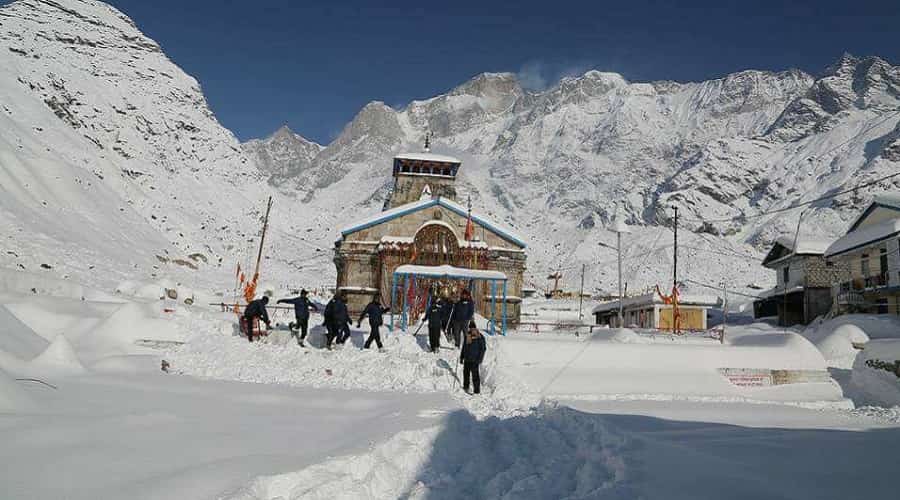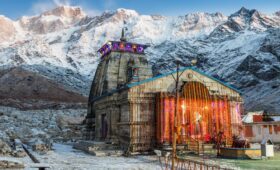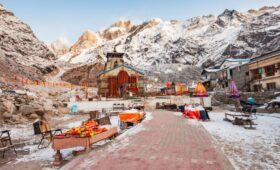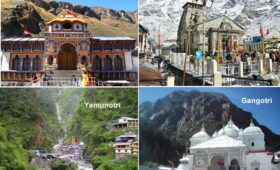Kedarnath and Badrinath Temple are considered for Do Dham Yatra instead of Yamunotri and Gangotri whereas the group of these 4 temples are the sacred pilgrimage which is called Char Dham Yatra of Uttarakhand. Each temples have its own significance for which every year millions of people visits these sacred temples to take darshan of the idols of these temples in which Kedarnath dedicated to Lord Shiva and Badrinath dedicated to Lord Vishnu, and to prove their faith in gods.
Both Temples are situated at high altitude in which Kedarnath Temple situated at an 3583 meters and the other side Badrinath Temple situated at an altitude of 3300 meters. Kedarnath and Badrinath have special importance in Hinduism religion because Kedarnath mentioned in hinduism scriptures and have lots of proves and mythology facts like how kedarnath survived in 2013 flood and how bhimshila came from, we,ll cover some of Kedarnath’s mythological facts and little about history in this blog.
The Legends of Kedarnath Temple
A. The origin of Kedarnath- The Pandavas’ Penance
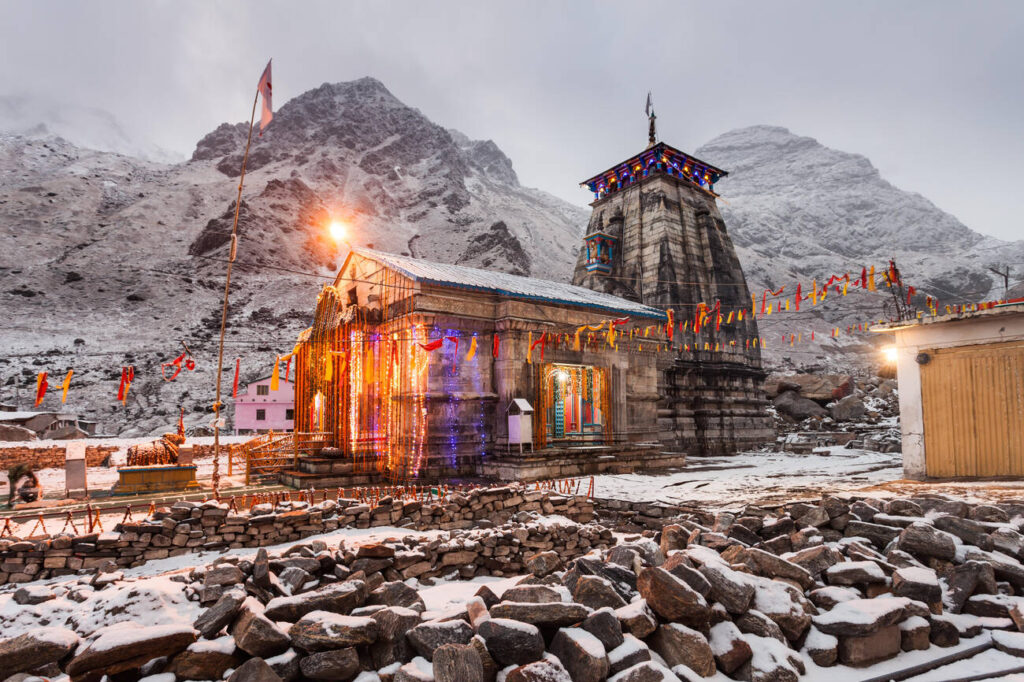
According to legends it is said to be that pandvas went to Kashi after Kurushetra war to apologize lord Shiva for thier sins and killing thier own cousins in Mahabharat but lord shiva was disappeared from guptkashi and then pandavas went to Himalayan mountain to find lord Shiva, when they found them lord shiva transformed into the Nandi (Bull) and to hide himself from pandavas but bheem one of pandvas found him then lord shiva disappeared in ground then after some time self manifested canonical shaped shiva linga appeared at that location. Today we are know that place as Kedarnath Temple.
B. The Jyotirlinga Connection and Eternal Flame
The Kedarnath Temple is one of the 12 Jyotirlingas, the holiest Hindu shrines of Shiva. Shiva is worshipped as the infinite, representing the limitless and the torpid. Shiva Purana describe these lingams, and there significance which was in existence.The text also states that these lingam are manifested by the two cosmic principles of the universe”male and female” and represent the most concentrated form of divinity, and reflect the true image of the deity.
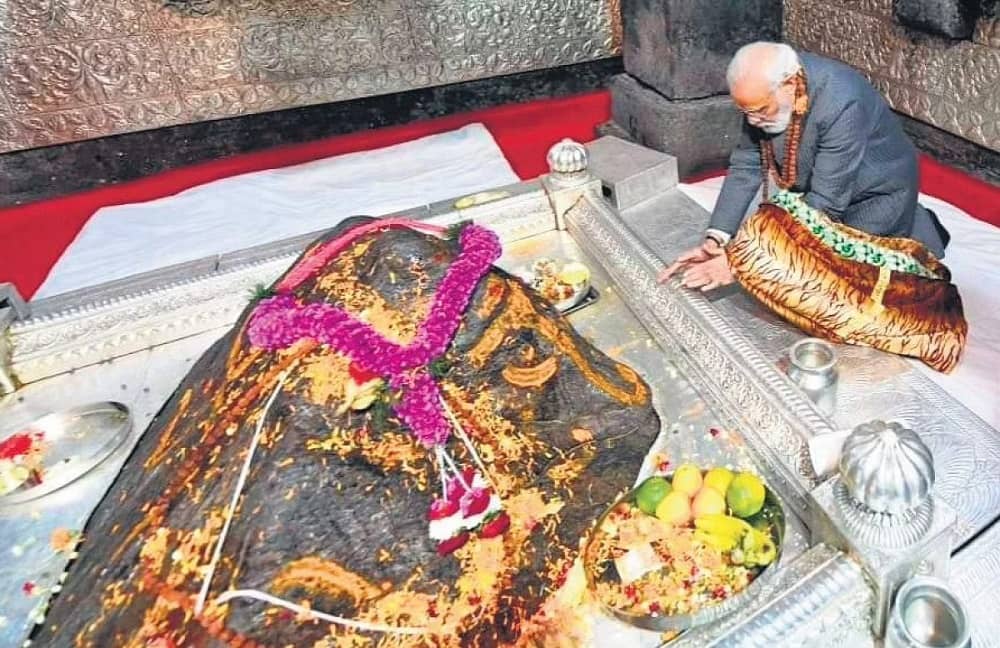
The Kedarnath lingam is Swayambhu, self-manifested and is an object of worship in itself We are getting too much detailed here. The Pandavas apologize to Shiva after the Kurukshetra war. Shiva avoided them by taking the form of a bull and plunging into the ground at Kedarnath, and is said to have left his hump behind.
Despite the flood causing devastation in the surrounding area, its inner sanctum had remained unharmed giving the impression that god had shielded it from the deluge, claimed the residents. Worshippers maintain that an eternal flame is burning within, representing the spirit of Shiva.
Kedarnath is particularly significant as the northernmost of the Jyotirlinga. Pilgrims hold the view that darshan of Kedarnath is as good as attaining Moksha, and the difficult Thanks climb is penance by the Pandv. The Jyotirlinga is not just a stone, it’s a testimony of faith, strength and Shiva’s universal power.
The Divine Tales of Badrinath Temple
A. Badrinath – The Abode of Lord Vishnu
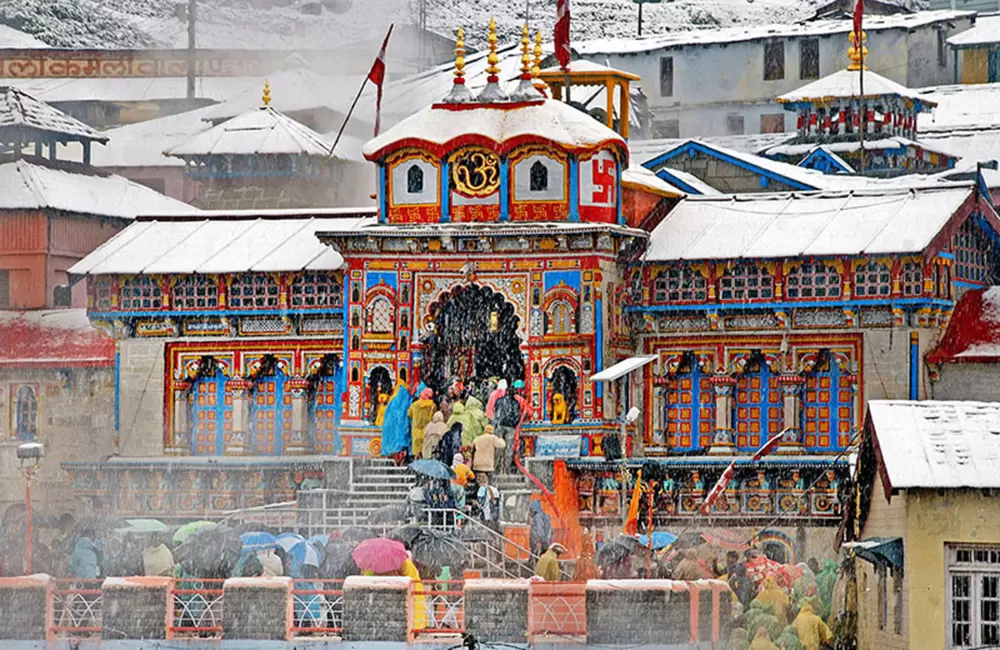
According to Hindu legends it is said to be that when lord Vishnu was sat for meditation he was unaware of cold whether then his consort goddess laxmi protected him by transforming in Badri Tree and after meditating lord vishnu gets impressed by her devotion for him, then lord vishnu named that place Badrika Ashram which know by Badrinath in today’s generation.
B. Adi Shankaracharya’s Role in Reestablishing the Temple
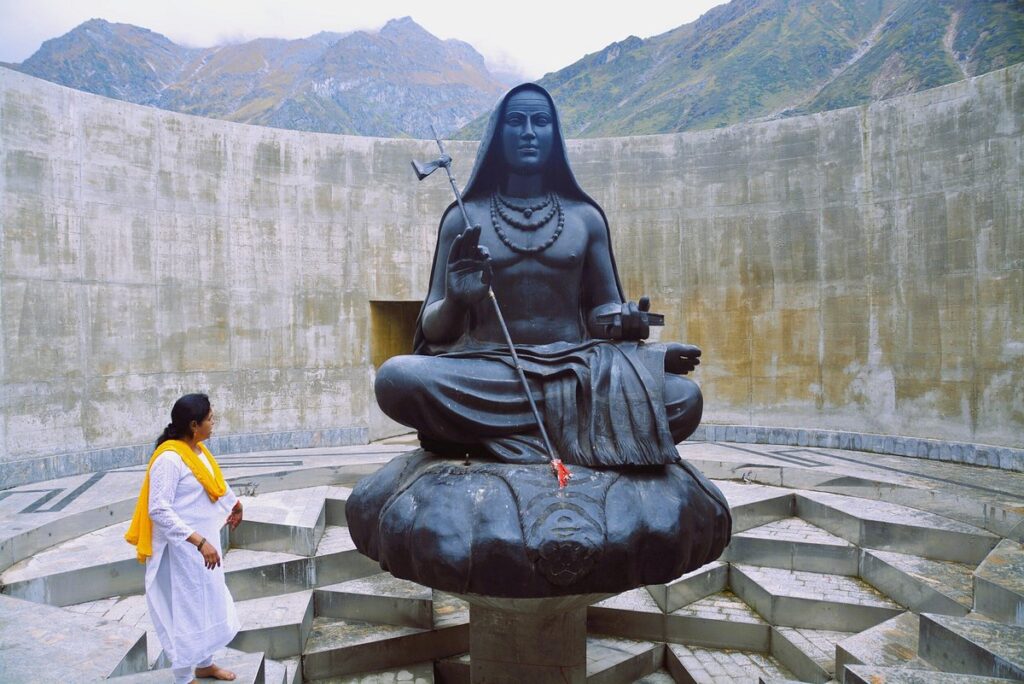
Adi Shankaracharya was the Hindu philosopher from the 8th century who played the crucial role to reestablishing the Badrinath Temple. In our tradition it is said that the temple has been lost but Adi Shankaracharya found the sacred Saligram Idol of lord Vishnu at an high altitude peak from Alaknanda river. Adi Sanakaracharya reinstalled it and restored the worship of Lord Vishnu, either recounstructed the temple and revived its ancient structure.
C. The Mystical Hot Springs (Tapt Kund)
Nestled next to Badrinath Temple in Uttarakhand, the holy hot water spring Tapt Kund, which translates to hot pond, is considered as sacred.
The locals believe that the fire god, Lord Agni dwells in its hot water which is a present from Lord Vishnu according to the legend. References to it like Garuda Purana describe it as capable of cleansing sins and providing moksha.
For centuries, pilgrims have braved the cold of the Himalayas to take a bath in its water before entering the Badrinath temple, for they believe it will purify them and prepare them for darshan. Adi Shankaracharya who recovered Badrinath in the 8th century, has also acknowledged the significance this place is called the place “where gods live”. The hot water spring, even when the entire area is locjked with snow, is a prime symbol of faith and part of the sacred Badrinath yatra.
Shared Mythological Connections Between Kedarnath and Badrinath
As we know Kedarnath and Badrinath are two of Char Dham Yatra which is considered as the path of heaven. It is said to be that completing Char Dham Yatra can wash your sins or will let you go to way of liberation. Pair of these temples reflects Hinduism profound unity in which lord Shiva represents dissoulustion at the other side lord Vishnu symbolize as the preservation, together maintaining cosmic balance.
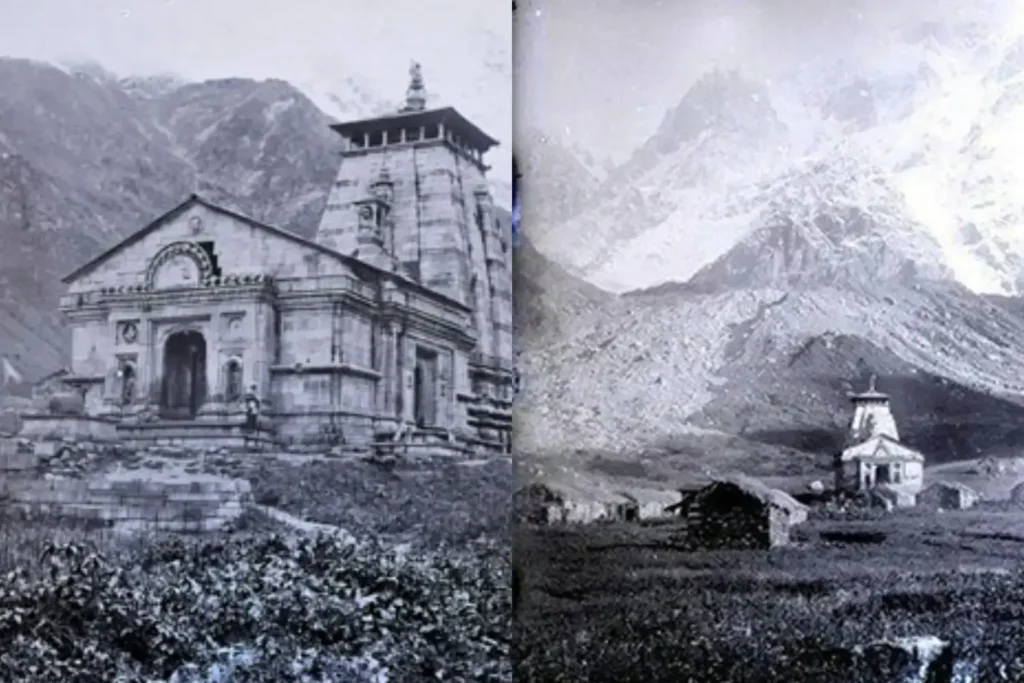
They are sacred, Devaloka’s gate where gods and sages meditated. Pilgrims trek to both, the soul’s journey to enlightenment. Together they are Hinduism, different paths to one truth. In scripture and ritual they coexist—Shiva and Vishnu not rivals but complementary forces of the divine.
Lesser-Known Myths and Beliefs
Behind the legends, Kedarnath and Badrinath stories are mystery. In Kedarnath, the locals speak of ghost priests, the spirits of ancient rishis who take it upon themselves to perform nightly pujas when the temple gates are close. Others say they can hear bells and chanting in the darkness, even though no human is around temple.
Badrinath’s Tapt Kund hot springs secrets a fact in the form of the water never getting cold, as Agni – the fire god – is believed to reside there. Worshippers who take bath here are believed to soak up Vishnu’s energy before darshan.
They are related, both have a heavenly connection – their opening and closing date was apparently, divinely signposted. Priests describe strange dreams of the deities or anomalies of the natural world (such as flowers blooming out of season) to preface the pujas.
In Joshimath, a rare manuscript is found that speaks about a mysterious place between Badrinath and Kedarnath, and a hidden tunnel programmed to be the escape route during exterior invasion and to know the secret of this tunnel, a hymn is chanted to open this door. Though uncharted, the theory is that the illumined yogis travel the path this way.
